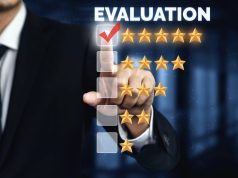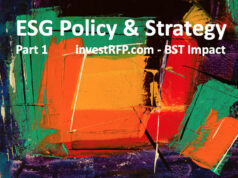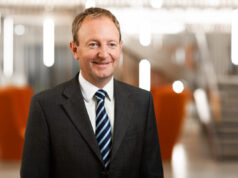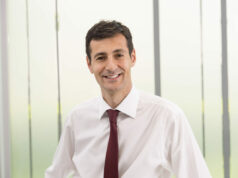INTERVIEW with Raj Thamotheram, Preventable Surprises, Founder
| You have been an advocate of stewardship for 20 years. It now – finally – seems to be catching on. So are you satisfied?
To paraphrase Winston Churchill – who was talking about the Americans and WW2 – you can always trust the investment industry to do what’s right, after it has exhausted every other possibility!
| That’s cute. So what do you think the investment industry should do differently to do stewardship better? What are the 2-3 actions you’d like to see institutional investors do?
Focusing on HOW to do stewardship better before asset owners really understand WHY this is important is yet another version of the same game. Practically all fund managers and investment consultants now have in-house expertise on what they need to do or they know where to get it. What’s missing is assertive and informed client demand, and at scale.
| Ok, so please tell readers: why should asset owners be aiming higher when it comes to stewardship?
Asset owners who are long horizon and well diversified primarily depend on the market return – the beta – to match their liabilities. The alpha is the icing, or perhaps even the cherry, on the cake. So what’s the best thing that investors can do to safeguard and enhance the beta? It’s stewardship.
| That’s all well and good but that’s not how asset owners monitor their performance. And perhaps more important, it’s not how governments or customers monitor funds.
You’ve put your finger on a big reason why funds are focused on the wrong thing – chasing alpha and beating benchmarks. What happens in our individual lives when we focus so much on less important things? Of course, we “don’t have time” for what’s really important.
| Ok, let’s assume that an asset owner understands ‘why’ they should be doing stewardship well and they’ve created some space focus on the beta. Should they do stewardship in-house or outsource it to external agents?
As you well know through your own work, there is no such thing as an “average” asset owner. There’s a huge variation in AUM and also attitudes to outsourcing. If, for example, a sovereign wealth fund or large public pension fund with a significant front office team doesn’t think it can do stewardship properly, this says a lot about the mental models of the senior executives and board. On the other hand a small asset owner which is heavily dependent on service providers should probably continue that approach with the stewardship function too. And for many funds, it makes sense to have an ESG stewardship specialist inhouse to help sensitise and monitor the traditional investment professionals be they inhouse and or external.
| Ok, so let’s say the decision has been made to outsource. Would you choose an investment manager? How can asset owners discern between service providers who all seem to have good stories to tell now?
As with all fiduciary duties, even if delegated, trustees are responsible. If they do have that know how on the board, they need to appoint a staff member or consultant who does. That specialist should be held accountable for their decisions. For example they should either use an established ranking of stewardship competence (e.g. the ShareAction ranking) or should have their own bespoke approach (which they should justify as being superior).
| Would you use a specialist engagement overlay provider?
EOPs are often excellent sources of stewardship expertise but they are currently misdirected. I’ve previously used, a bit tongue in cheek, the analogy of the difference between a sex worker and a sex therapist. Both have specialist technical knowledge but serve very different purposes. The former are often used as a replacement option when relationships have failed. The latter can help partners re-establish trust and learn together how to satisfy their requirements. This is what EOPs should be doing in my opinion and would like to do if enough clients wanted this.
| They seem to be 101 issues that warrant stewardship attention. And there are hundreds, if not thousands, of companies in a typical portfolio.
There are three mega and crosscutting stewardship themes that demand acetone attention today the first of interconnected climate and biodiversity crises. Second is income in the quality and the political polarisation this produces. And third is the corporate capture of politics and regulation. I’d recommend that all asset owners focus on these three issues, whatever else they do. Particular asset owners may have specific topics that connect with their organisational mission. For example a pension fund for health workers may want to pay attention to how it relates to tobacco and alcohol companies.
| But can a single and smallish asset owner hope to have any meaningful impact on these very deep seated problems?
I remember talking to a very large sovereign wealth fund who told me all seriousness that the “only own 3% of company X” and therefore couldn’t have any real impact! “AUM envy” is another game that some asset owners like to play. Seeing that it’s a way to avoid responsibility is the first step to accepting accountability. That said, it is true that asset owners need to be focused on real world impact. and that means going back to their mental models and theories change. For example, if they only use an index manager, then they should partner with similar asset owners, first to really understand the different performance of these managers and then either engage with their preferred manager (to get them to improve) or move their money (ie make stewardship as important a criteria as, say, cost when awarding new mandates). Of course these are not alternatives – making public a decision to do the latter has a very powerful engagement effect.
| Finally, and looking back over your 20 years of experience with stewardship, what is the first step that an asset owner should make to become a bigger part of the solution?
As with all aspects of core organisational culture, stewardship starts at the top. Either the chair of the trustee board (and also the chair of the investment committee, if one exists) needs to be “stewardship competent” or he or she needs to appoint someone to play that role at board level. This may need the board to refresh its DNA and ensure this is an on-going development priority. This is the most important thing that an asset owner can do – the allegory of the hare and the tortoise definitely applies! Instead, many asset owners procrastinate and then jump to either delegating stewardship to an existing (and potentially stewardship incompetent) investment consultant or appointing a junior ESG professional, several layers down from the senior management team. This is yet more distraction activity to be avoided. The pension fund members would be much better served if the trustees spent two or three committee sessions or an away day really understanding the 3 mega systemic risk that I raised earlier – and how these are already impacting on current and future beneficiaries (ie likely scenarios). Internal conflict (ie between the trustees) is one reason why readers consider this advice impossible. If so, I’d suggest the concerned trustees invest in becoming even better advocates for change and building the internal and external alliances needed to be successful. This is also stewardship!
| brief bio
Dr. Raj Thamotheram is a pioneer in long-term & sustainable investing. He worked for 12 years in senior management roles at USS and AXA IM before becoming an independent consultant and founding Preventable Surprises, a think-do tank focused on institutional investors and systemic risks. He is a recognised thought leader on how investors can enable companies to put people and planet on par with profit and so deliver long-term value. He has been nominated twice by Global Proxy Watch as “one of the 10 most influential figures in the corporate governance field”and voted one of the top 10 “Most positive contributors to SRI & CG” in the Independent Research in Responsible Investment (global) poll. He is a co-founder of the Network for Sustainable Financial Markets and a former trustee of Friends Provident Foundation, where he played a key role in the organisation’s decision to become an “active and engaged investor”.








